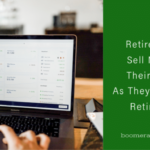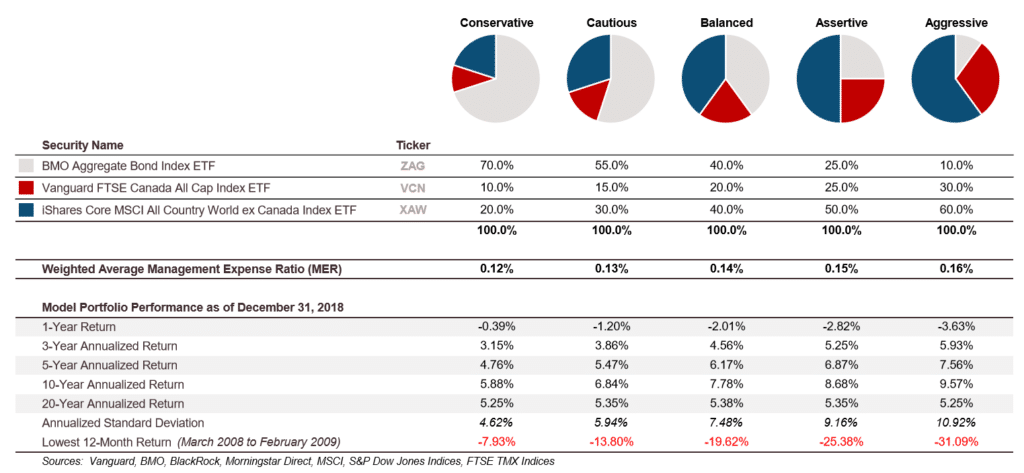 By Dale Roberts, for Boomer & Echo
By Dale Roberts, for Boomer & Echo
Special to the Financial Independence Hub
Retirement can be a scary time for retirees who have considerable and even modest portfolios. We want to protect those assets. And certainly the risk tolerance level for most retirees will drop considerably. And that risk tolerance level will often drive the bus with respect to your allocation to bonds and cash and other risk management techniques you might put to work.
While the order of returns does not matter considerably in the accumulation stage, when we enter retirement we face that sequence-of-returns risk. Years of poor stock market returns early in the retirement funding stage can permanently impair your portfolio and your retirement. And in fact the risk to retirees begins well before that retirement start date. On Cut The Crap Investing I wrote on that with You Should Protect Your Retirement Portfolio Long Before Your Retirement Start Date. [This also ran subsequently here on the Hub.] Have a read of that article and you’ll see that the Retirement Risk Zone is typically qualified as 5 years before retirement and your first 5 years in retirement. We have to be careful as we approach retirement and in those first few years.
Can a near retiree almost completely de-risk the portfolio and sell a large percentage of their stocks? Sure, it may be emotionally pleasing, but with less stocks in hand it may slightly compromise late accumulation stage portfolio growth. That said, the most important part of it all might be that comfort level and that stress reduction event that comes with greatly lessening that stock component. And let’s face it, some near retirees who’ve planned well and who are lucky enough to have a generous defined pension plan might not need much or any inflation-beating portfolio growth. We’re all snowflakes when it comes to retirement funding, we are all entirely unique in our needs and our situation.
But let’s look at a scenario where a retiree does need their personal portfolio to work very hard; they are counting on that portfolio to deliver a generous component of their ongoing retirement funding needs. It’s time for those hard-earned monies to work for them. On the ‘rule of thumb’ spend rate for portfolios see my Boomer and Echo guest post: The 4% Rule: Is There A New Normal for Retirees?You’ll read that historically a retiree with a sensible mix of stocks and bonds can spend at the rate 4%-4.5% of the portfolio value each year, with an adjustment or increase each year to compensate for inflation.
Given that we want some growth in the later stages of accumulation and we need that growth component to potentially earn returns above that 5% range, we do not want to abandon that Balanced Portfolio model, we still need those stocks.
To manage the risks, we want to keep that nice mix of Canadian, US and perhaps International stocks to work in concert with that bond component. And the most conservative range that we might move to is 80% to 70% fixed income. That’s a very conservative mix of course.
The returns might be muted but you might be able to eek out 3% income from your fixed income component (a mix of bonds and GICs) and perhaps if stock markets continue to deliver 9-10% annual you must see a returns breakdown such as this:
- 70% of portfolio @ 3% = 2.1%
- 30% of portfolio @ 10% = 3%
That might give you a return in the 5% annual range if the stock market ‘rally’ continues and the bond market does not come under pressure.
Now it’s time to dollar cost average back into stocks
OK, so you’ve largely de-risked but you want and need your portfolio to work as hard as possible. When you hit that retirement date you can begin to increase your stock exposure over time. You might become a retiree stock ‘dollar cost averager’. Yup, you’ll employ the tried and true technique that many of us employ in the accumulation stage: you’re going to add to your stocks on a regular schedule.
You’ve de-risked and then you begin and continue to add risk. They call this an equity glide path. And this has been described and studied in detail by retirement funding rockstars Wade Pfau and Michael Kitces. Here’s their White Paper on the strategy.
That paper demonstrates that the bond percentage should equal your age mantra has no basis in math. In fact a very conservative de-risking with an eventual equity glide path even beats the typical static allocation approach of a classic 60/40 Balanced Portfolio. From that paper:
“Declining equity glide paths do not necessarily help support retirement success. Static allocations generally fare worse than more conservative starting allocations that rise in equity exposure throughout retirement. Depending on the underlying assumptions, the optimal starting equity exposures are generally around 20 percent to 40 percent and finish at around 40 percent to 80 percent.”
When should you de-risk?
Many financial planners would suggest that you ‘risk-down’ five to several years before you need to start harvesting those assets. That could mean many years of a conservative portfolio and the more modest returns that may come with the approach. That said, according to the Canadian Couch Potato site, the returns of the more conservative portfolios are very solid, historically.
If you embraced the de-risking equity glide approach, you might move to that range of 70% fixed income 5 years or more before your retirement date and the date that you need to start harvesting those assets. When you hit that retirement date you would then start adding more stock exposure.
The examples used by Pfau and Kitces suggest a very gradual re-allocation to stocks even over a 30 year period. I’d suggest a quicker move to more stocks, perhaps over a 10 year or 15 year period. We typically move through market corrections every several years; using a 10 or 15 year timeline should present a market correction and allow you to grab those shares as they go on sale. This would be a situation where the retiree is taking advantage of lower prices for stock assets, just as would an investor who is in the accumulation stage.
With the de-risking strategy, we might be able to take on less risk and generate better retirement funding results. The study also suggests:
“In scenarios where equity returns are good early on, the retiree is so far ahead it doesn’t matter (relative to achieving the original goal). Rising equity glide paths create a “heads you win, tails you don’t lose” outcome in securing a starting goal. Of course, retirees who are far ahead may choose to decrease their equity exposure later simply because they have a significant amount of newfound wealth.”
Check in with a retirement specialist
Keep in mind that de-risking and selling stocks creates tax consequences in your taxable accounts. And to discover the optimal order of asset harvesting (pensions to annuities to RRIF to TFSA to taxable) it may be more than beneficial to check in with an advice-only planner. Retirement funding is more than tricky business, there are many moving parts, and strategies and spending plans can change over time. For more on that please have a read of my review of Retirement Income for Life: Spending More Without Getting More.
Thanks for reading, and thanks to Robb for having me back on Boomer and Echo while he’s enjoying his fabulous trip. Leave a message, would you now consider de-risking for retirement? I’ll check in and answer any questions.
 Dale Roberts is the Chief Disruptor at cutthecrapinvesting.com. A former ad guy and investment advisor, Dale now helps Canadians say goodbye to paying some of the highest investment fees in the world. This blog originally appeared as a guest blog on the Boomer & Echo site on July 4, 2019 and is republished on the Hub with permission.
Dale Roberts is the Chief Disruptor at cutthecrapinvesting.com. A former ad guy and investment advisor, Dale now helps Canadians say goodbye to paying some of the highest investment fees in the world. This blog originally appeared as a guest blog on the Boomer & Echo site on July 4, 2019 and is republished on the Hub with permission.



3% on fixed income..where, 9 to 10% on stocks, I smell BS.